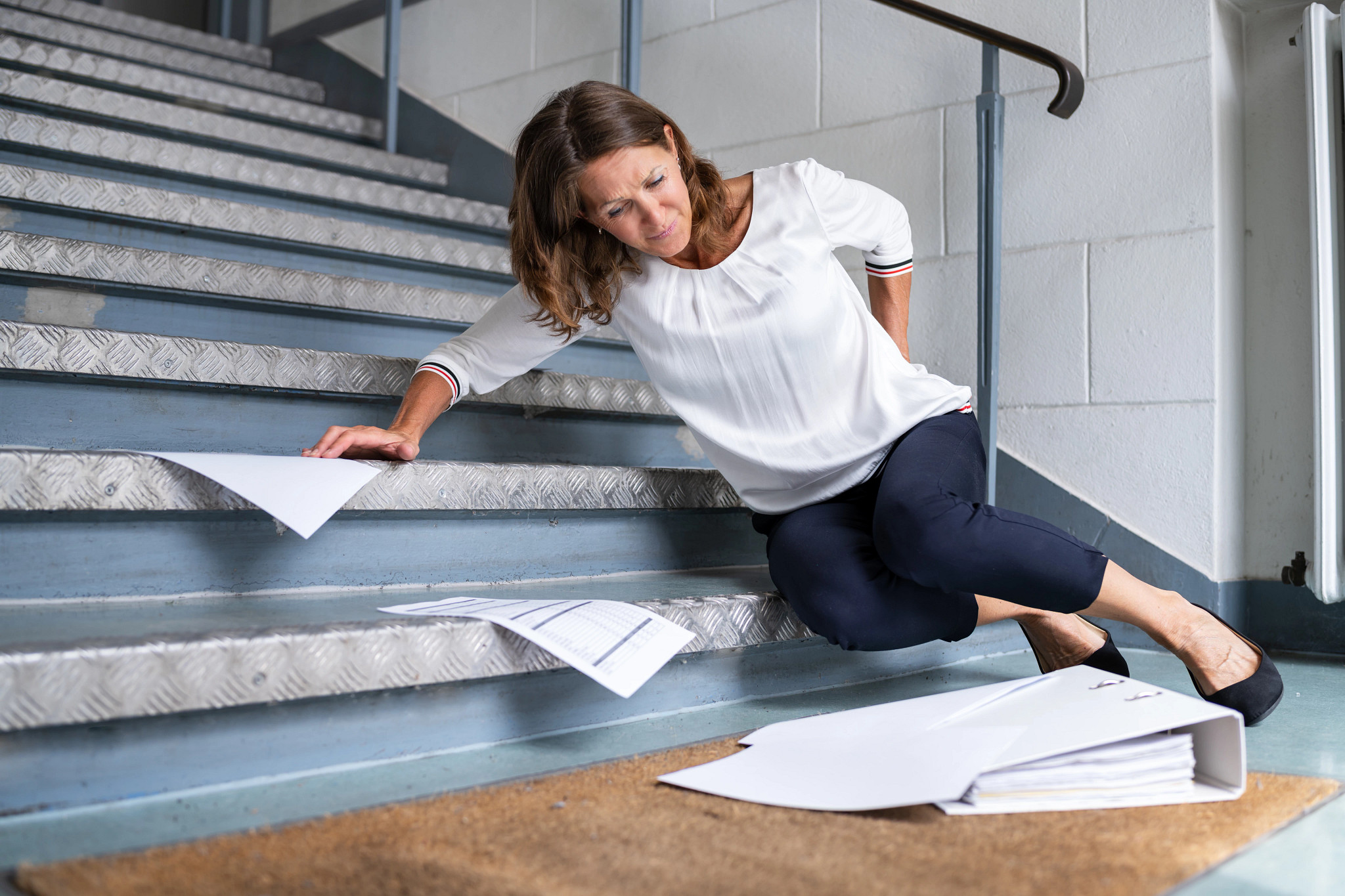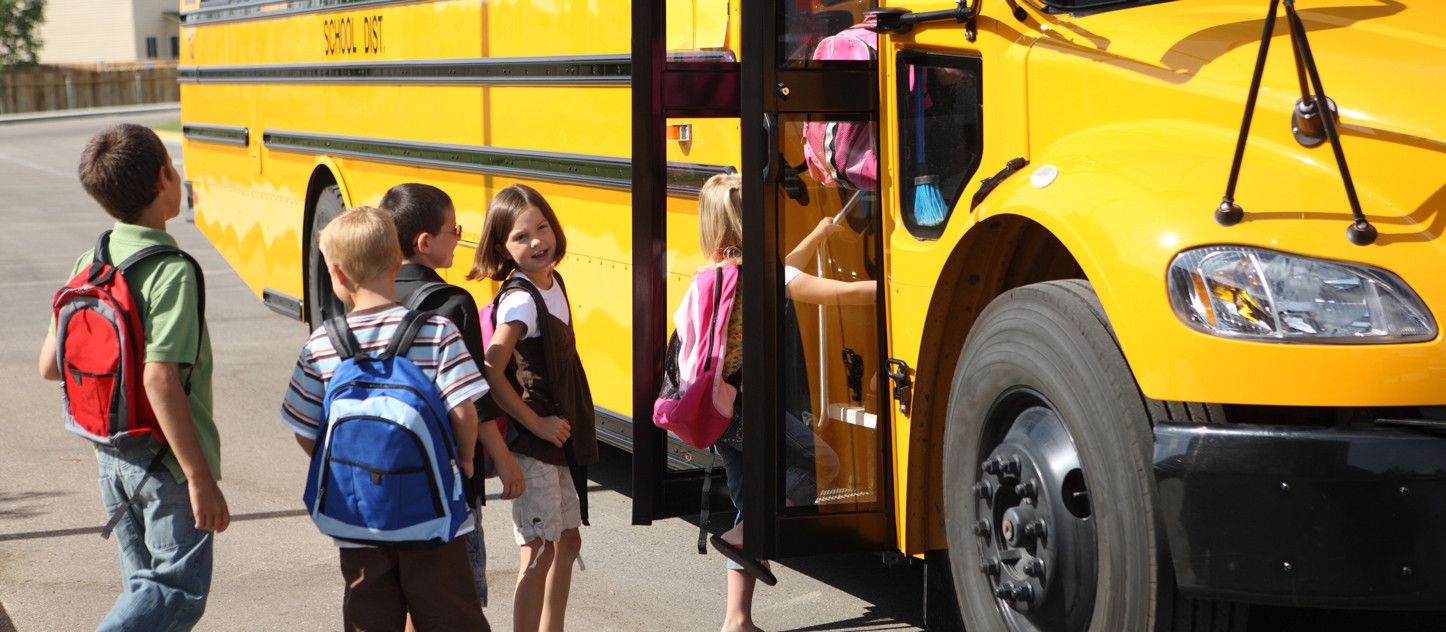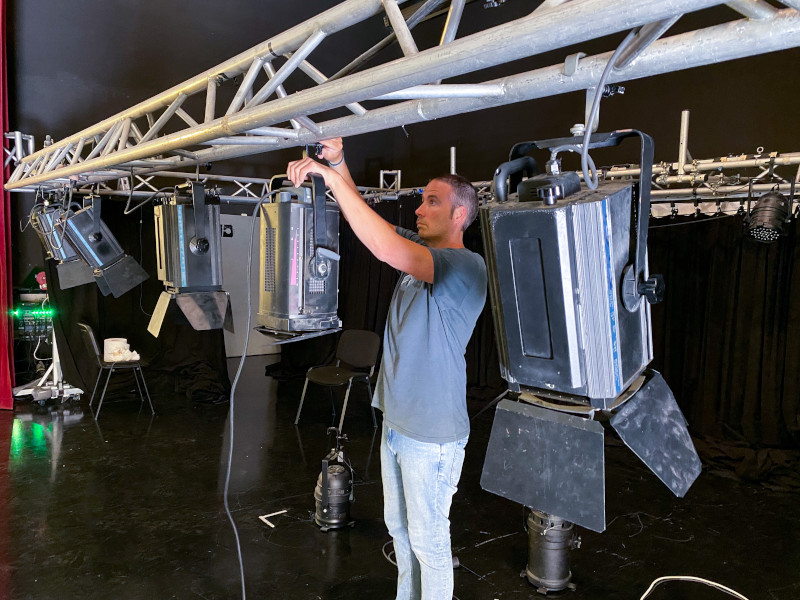Watch where you step: Preventing workplace injuries

Slip, trip and fall (STF) injuries are among the most frequent incidents in schools, often resulting in costly workers’ compensation claims. STF incidents occur throughout all areas of school buildings and properties, including parking lots, entrances, cafeterias, hallways, playgrounds, classrooms and restrooms. As September is fall prevention month, we’d like to focus on the human factors that contribute to fall injuries in schools.
Multiple factors may contribute to STF incidents (slippery walking surfaces, dimly illuminated areas, slight changes in elevation, etc.). However, the root cause of most STF incidents is typically related to individual accountability, situational awareness of surroundings or unsafe work practices. For that reason, preventing STF incidents begins with taking personal responsibility for your own safety.
Common factors in STF incidents
Individual Accountability
- Improper footwear – Choose footwear with a slip-resistant tread to maximize traction on all walking surfaces. Avoid smooth-soled shoes, which do not afford adequate traction on damp floors or smooth walking surfaces. Select footwear based on the anticipated and unanticipated tasks you may be required to perform.
- Time constraints – STF incidents are more likely to occur when individuals are in a hurry and not paying attention to potential hazards.
- Distractions – Don’t try to multi-task or check an electronic device while walking.
Situational Awareness of Surroundings
- Not being attentive to changes in walking surface elevation changes.
- Tripping over objects stored on the floor in designated walking areas.
- Attentive to changing work environments such as staff or students moving items, creating potential STF hazards.
Unsafe Work Practices
- Not walking on designated walking paths (i.e., cutting through grass/mulch or curb islands).
- Standing on chairs, desks or other items not designed to be used to access overhead items.
- Not using the handrail and/or carrying too many items when ascending or descending stairs.
- Bypassing warning devices of potential STF hazards (i.e., wet floor sign).
- Placing or storing items on walking surfaces subjected to foot traffic.
Best practices
Watch where you’re going
- Watch for items placed or stored on the floor that may pose a STF hazard.
- Constantly scan for potential STF hazards while walking.
- Pay attention to where you are stepping, but also scan the area in the direction you are walking.
- Slow down and take corners wide to avoid collisions at blind hallway corners.
- Be cautious of doors opening or people quickly exiting rooms leading to hallways.
Consistent periodic safety communications
- During your monthly faculty and departmental meetings, take time to conduct short safety discussions. Review recurring workers’ compensation incident trends with all staff members so preventative measures can be taken.
- Conduct accident investigations to document the conditions present and footwear worn at the time of the STF incident. Accident investigations should be completed immediately after the incident.
- Modify your accident investigation form to document the footwear tread type worn by the injured staff member at the time of the STF injury. This will help you identify specific types of footwear tread associated with STF incidents in your facilities.
Stairs awareness
- Keep hands free. Avoid carrying objects while ascending or descending stairs.
- Use the handrail and walk to the side of the stairs nearing the handrail or wall surface in the event balance is lost.
- Slow down and firmly plant a foot on each step. Place the entire foot in the center of the stair tread, not the stair tread edge.
- Avoid distractions and stay attentive while on the stairs.
- Use multiple points of contact while descending or ascending stairs. Keep one hand on the handrail and one foot on the step at all times.
You don’t necessarily need to plan out your day to avoid every possible hazard or risk, but you should assess your environment and tasks, and take the necessary steps to keep yourself safe. Paying extra attention to where you are going, what you are doing, or what you intend to do, may make all the difference.
For more information on slip/fall prevention and preventing work-related incidents, check out our other resources on cmregent.com.




